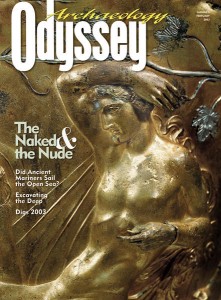Editors’ Page: Is Silence Golden?
Some scholarly societies won’t discuss the James Ossuary

You’ve probably noticed that our sister magazine Biblical Archaeology Review has been in the news lately, having broken the story, if you’ll excuse the expression, about the bone box inscribed “James, son of Joseph, brother of Jesus.” (The box developed serious cracks in transit to the Royal Ontario Museum, in Toronto, for exhibition; these cracks, however, were quickly mended, and the exhibit went on as planned).
Numerous questions have been raised about the bone box, or ossuary, and its inscription: Does the box in fact date to the first century? Is the inscription authentic or a modern forgery? Are these three names the people mentioned in the New Testament? What are the theological implications? Who is this James, the brother of Jesus?
But the “discovery” of this ossuary has also brought to the fore issues that have been the subject of extensive concern in the pages of Archaeology Odyssey: What is the relationship between looting and the antiquities market? How can we reduce looting? How should scholars treat objects that surface on the antiquities market?
This ossuary was not professionally excavated; it came to public attention via the antiquities market. It is what scholars call “unprovenanced.” The collector says he’s owned it since the early 1970s without realizing its significance—until he showed it to the world-famous Semitic paleographer André Lemaire, who wrote the article in Biblical Archaeology Review.
Already a library member? Log in here.
Institution user? Log in with your IP address.

